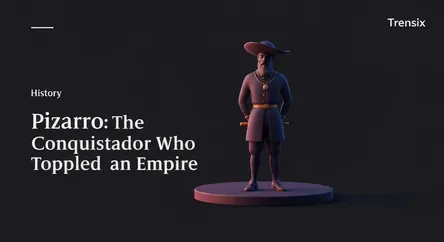History
Pizarro: The Conquistador Who Toppled an Empire

The story of Francisco Pizarro, the Spanish explorer whose ambition led to the conquest of the vast Inca Empire and changed South America forever.
What is it?
Francisco Pizarro (c. 1478-1541) was a Spanish conquistador who led the expedition that conquered the Inca Empire. Born in Spain to a poor family, he was an illiterate but ambitious soldier who sought fortune in the New World. In 1532, with a small force, he orchestrated the capture of the Inca emperor Atahualpa at the Battle of Cajamarca. After receiving a massive ransom of gold and silver for the emperor's release, Pizarro had him executed anyway. He then seized the Inca capital of Cuzco and, in 1535, founded Lima, which is now the capital of Peru.
Why is it trending?
Pizarro remains a major historical figure because his conquest represents a pivotal moment in world history: the collision of European and American empires. The fall of the Incas—a sophisticated and powerful civilization—at the hands of a small band of conquistadors is a dramatic tale of strategy, betrayal, and technological advantage. His story is a focal point for ongoing discussions about colonialism, its brutal methods, and its long-lasting consequences. His legacy is continuously re-examined, making him a compelling and controversial subject in history.
How does it affect people?
Pizarro's conquest had a devastating and permanent impact on the indigenous peoples of South America. It led to the collapse of the Inca Empire, a massive loss of life due to violence and European diseases, and the systemic destruction of a culture. For Spain, the conquest brought immense wealth, funding its global empire and altering Europe's economy. His actions initiated centuries of Spanish colonial rule, fundamentally shaping the demographics, culture, and politics of modern Peru and much of the continent. The conquest created a new social order, but at the cost of a civilization.